54 start with G start with G

“Many years later, as he faced the firing squad, Colonel Aureliano Buendía was to remember that distant afternoon when his father took him to discover ice.” Thus begins Nobel Prize winner Gabriel García Márquez’s One Hundred Years of Solitude, one of the twentieth century’s most lauded works of fiction. In Gabriel García Márquez, literary scholar Stephen M. Hart provides a succinct yet thorough look into García Márquez’s life and the political struggles of Latin America that have influenced his work, from Love in the Time of Cholera to Memories of My Melancholy Whores.
By interviewing García Márquez’s family in Cuba, Hart was able to gain a unique perspective on his use of “creative false memory,” providing new insight into the magical realism that dominates García Márquez’s oeuvre. Using these interviews and his original research, Hart defines five ingredients that are critical to García Márquez’s work: magical realism, a shortened and broken portrayal of time, punchy one-liners, dark and absurd humor, and political allegory. These elements, as described by Hart, illuminate the extraordinary allure of García Márquez’s work and provide fascinating insight into his approach to writing. Hart also explores the divisions between García Márquez’s everyday life and his life as a writer, and the connection in his work between family history and national history.
Gabriel García Márquez presents an original portrait of this well-renowned writer and is a must-read for fans of his work as well as those interested in magical realism, Latin American fiction, and modern literature.
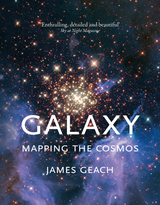
Taking us on a compelling tour of the state-of-the-art science involved in mapping the infinite, Geach offers a first-hand account of both the science itself and how it is done, describing what we currently know as well as that which we still do not. He goes back one hundred years to when scientists first proved the existence of other galaxies, tracking our continued improvement in the ability to collect and interpret the light that stars in faraway galaxies have emitted through space and time. He discusses examples of this rapidly accelerating research, from the initial discovery that the faint “spiral nebulae” were actually separate star systems located far beyond the Milky Way to the latest observations of the nature of galaxies and how they have evolved. He also delves into the theoretical framework and simulations that describe our current “world model” of the universe.
With one hundred superb color illustrations, Galaxy is an illuminating guide to the choreography of the cosmos and how we came to know our place within it that will appeal to any stargazer who has wondered what was beyond their sight.
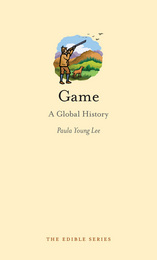
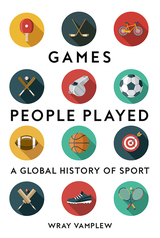
Games People Played is, surprisingly, the first global history of sports. The book shows how sports have been practiced, experienced, and made meaningful by players and fans throughout history. It assesses how sports developed and diffused across the globe, as well as many other aspects, from emotion, discrimination, and conviviality; to politics, nationalism, and protest; and how economics has turned sports into a huge consumer industry. It shows how sports are sociable and health-giving, and also contribute to charity. However, it also examines their dark side: sports’ impact on the environment, the use of performance-enhancing drugs, and match-fixing. Covering everything from curling to baseball, boxing to motor racing, this book will appeal to anyone who plays, watches, and enjoys sports, and wants to know more about their history and global impact.
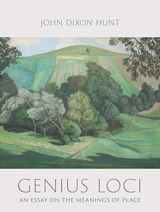
For ancient Romans, genius loci was literally “the genius of the place,” the presiding divinity who inhabited a site and gave it meaning. While we are less attuned to divinity today, we still sense that a place has significance. In this book, eminent garden historian John Dixon Hunt explores genius loci in many settings, including contemporary land art, the paintings of Paul and John Nash, travel writers such as Henry James, Paul Theroux, and Lawrence Durrell on Provence, Mexico, and Cyprus, and landscape architects who invent new meanings for a site. This book is a nuanced, thoughtful exploration of how places become more significant to us through the myriad ways we see, talk about, and remember them.

For over six centuries, Chaucer has epitomized poetic greatness, though more recent treatments of The Canterbury Tales’ lively and often risqué style have made his name more synonymous with bawdy humor. But beyond his poetic achievements, Chaucer assumed various roles including those of royal attendant, soldier, customs official, justice of the peace, and more. In this book, Mary Flannery chronicles Chaucer’s life during one of the most turbulent periods of English history, illuminating how he came to be known not only as the father of English poetry but also as England’s “merry bard.”
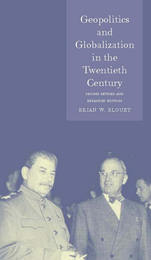

Geopolitics and Globalization in the Twentieth Century looks at the struggle between the processes of globalization and the forces of geopolitics over the last 150 years. The twentieth century witnessed conflicts between geopolitical states who wanted to close off and control land, resources, and population—like Nazi Germany and the former Soviet Union—and globalizing ones who wished to open up the world to the free flow of ideas, goods and services—like Britain and America. Geopolitics and Globalization describes and analyzes the tug-of-war between these two tendencies, the results of which have determined the shape and behavior of the world we live in today.
Beginning his survey in the late nineteenth century, Brian W. Blouet, in this revised and expanded second edition, brings his analysis up to the present day, when communication technologies are no longer land- or sea-based, and thus render globalization nearly inevitable.

Georges Bataille was arguably the greatest influence on the poststructuralist revolution in twentieth-century thought and literature, yet few truly understand his work and legacy. Stuart Kendall now translates the work and life of this renowned French writer, anthropologist, and philosopher into a concise yet informative biography that reveals fascinating facets of this intellectual giant.
Until his death in 1962, Bataille was an instrumental force in philosophical debate, acting as a foil for both Surrealism and Existentialism and advocating radical views that spanned the entire spectrum of political thought. Georges Bataille chronicles these aspects of his intellectual development, as well as tracing out his pivotal role in the creation of the College of Sociology and how his writings in aesthetics and art history laid the groundwork for visual culture studies. Kendall positions Bataille at the heart of a prodigous community of thinkers, including André Breton, Jean-Paul Sartre, and Jacques Lacan.
A compelling account, Georges Bataille will be invaluable for all thinkers who have benefited from Bataille’s lasting contributions.
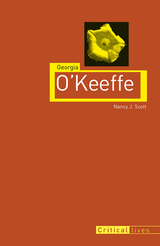
In this book, Nancy J. Scott draws on extensive sources—including many of O’Keeffe’s letters—to offer a sensitive and incisive examination of her groundbreaking works, their evolution, and how their reception has been caught in conflicts between O’Keeffe’s inner self and public persona. Following the young artist as her path-breaking, abstract charcoal landscapes caught the attention of gallery impresario Stieglitz, Scott tells the story of their partnership, of Stieglitz’s nudes, and the development of O’Keeffe’s early reputation as a sexually inspired, Freudian-minded artist. Scott explores the independent expression that O’Keeffe forged in opposition to the interpretations of her abstract work and the hybrid space that O’Keeffe’s works came to inhabit. Ultimately, she blended the abstract with the real in interpretations of flowers, bones, shells, rocks, and landscapes, which would become her hallmark subjects.
Unique to this biography is the inclusion of her letters—which have only recently been made available. They show that her words can be just as revelatory as her paintings, and they offer the intimate voice of an artist alive in an era of great artistic development. The result is a succinct yet comprehensive account of one of the most prolific and important artists of the twentieth century.


“You are, of course, never yourself,” wrote Gertrude Stein (1874–1946) in Everybody’s Autobiography. Modernist icon Stein wrote many pseudo-autobiographies, including the well-known story of her lover, The Autobiography of Alice B. Toklas;but in Lucy Daniel’s Gertrude Stein the pen is turned directly on Stein, revealing the many selves that composed her inspiring and captivating life.
Though American-born, Stein has been celebrated in many incarnations as the embodiment of French bohemia; she was a patron of modern art and writing, a gay icon, the coiner of the term “Lost Generation,” and the hostess of one of the most famous artistic salons. Welcomed into Stein’s art-covered living room were the likes of Picasso, Matisse, Hemingway, and Pound. But—perhaps because of the celebrated names who made up her social circle—Stein has remained one of the most recognizable and yet least-known of the twentieth-century’s major literary figures, despite her immense and varied body of work. With detailed reference to her writings, Stein’s own collected anecdotes, and even the many portraits painted of her, Lucy Daniel discusses how the legend of Gertrude Stein was created, both by herself and her admirers, and gives much-needed attention to the continuing significance and influence of Stein’s literary works.
A fresh and readable biography of one of the major Modernist writers, Gertrude Stein will appeal to a wide audience interested in Stein’s contributions to avant-garde writing, and twentieth century art and literature in general.
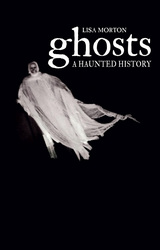
Tracing the ghost’s constantly shifting contours, Morton asks the most direct question—What exactly is a ghost?—and examines related entities such as poltergeists, wraiths, and revenants. She asks how a ghost is related to a soul, and she outlines all the different kinds of ghosts there are. To do so, she visits the spirits of the classical world, including the five-part Egyptian soul and the first haunted-house, conceived in the Roman playwright Plautus’s comedy, Mostellaria. She confronts us with the frightening phantoms of the Middle Ages—who could incinerate priests and devour children—and reminds us of the nineteenth-century rise of Spiritualism, a religion essentially devoted to ghosts. She visits with the Indian bhuta and goes to the Hungry Ghost Festival in China, and of course she spends time in Mexico, where ghosts have a particularly strong grip on belief and culture. Along the way she gathers the ectoplasmic residues seeping from books and film reels, from the Gothic novel The Castle of Otranto to the 2007 blockbuster Paranormal Activity, from the stories of Ann Radcliffe to those of Stephen King.
Wide-ranging, informative, and slicked with over fifty unearthly images, Ghosts is an entertaining read of a cultural phenomenon that will delight anyone, whether they believe in ghosts or not.
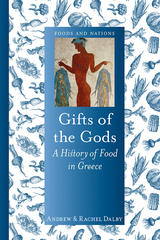
Greek food is brimming with thousands of years of history, lore, and culture. The country has one of the most varied landscapes of Europe, where steep mountains, low-lying plains, rocky islands, and crystal-blue seas jostle one another and produce food and wine of immense quality and distinctive taste. The book discusses how the land was settled, what was grown in different regions, and how certain fruits, herbs, and vegetables became a part of local cuisines. Moving through history—from classical to modern—the book explores the country’s regional food identities as well as the export of Greek food to communities all over the world. The book culminates with a look at one of the most distinctive features of Greece’s food tradition—the country’s world renown hospitality. Illustrated throughout and featuring traditional recipes that blend historical and modern flavors, Gifts of the Gods is a mouth-watering account of a rich and ancient cuisine.

Drawing on personal experience, extensive research, and public school representations in poetry, school slang, spy films, popular novels, and rock music, Brooke-Smith offers a fresh account of upper-class adolescence in Britain and the role of elite private education in shaping youth culture. He shows how this central British institution has inspired a counterculture of artists, intellectuals, and radicals—from Percy Shelley and George Orwell to Peter Gabriel and Richard Branson—who have rebelled against both the schools themselves and the wider society for which they stand. Written with verve and humor in the tradition of Owen Jones’s The Establishment: And How They Get Away With It, this highly original cultural history is an eye-opening leap over the hallowed iron gates of privilege—and perturbation.

Beckman follows Deleuze from the salons of his early student years through his popularity as a young teacher to the extraordinarily productive phases of his philosophical work. She examines his life at the experimental University of Paris VIII and his friendships with people like Michel Foucault and Félix Guattari, and she considers how Deleuze’s philosophical developments resonate with historical, political, and philosophical events from World War II to the student uprisings in the 1960s to the Israeli/Palestinian conflict. Beckman ultimately highlights the ways that Deleuze’s legacy has influenced many branches of contemporary philosophy, offering a rich portrait of a contemporary philosopher who wrestled with some of philosophy’s most fundamental questions in fresh and necessary ways.
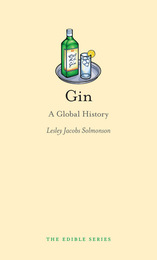
Mother’s Milk, Mother’s Ruin, and Ladies’ Delight. Dutch Courage and Cuckold’s Comfort. These evocative nicknames for gin hint that it has a far livelier history than the simple and classic martini would lead you to believe. In this book, Lesley Jacobs Solmonson journeys into gin’s past, revealing that this spirit has played the role of both hero and villain throughout history.
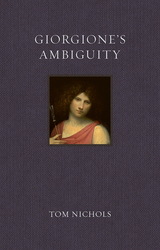
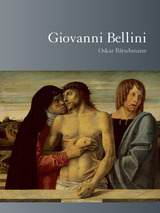
The artist struggled to break out of the long shadow cast by his accomplished father Jacopo and father-in-law Andrea Mantegna, and Bätschmann chronicles Bellini’s development of distinct aesthetic and painting techniques that enabled him to set himself apart. Bellini also insisted on choosing his own subjects and themes, independent of the preferences of his patron Isabella d’Este, and thus set new standards for the role of the artist.
Anchoring the analysis are a wealth of vibrant color reproductions that include such famous works as The Feast of the Gods and Madonna and Child, as well as photographs of Bellini’s lauded altar-pieces at the churches of San Giobbe, Murano, and San Zaccania. Drawing on these masterpieces, Bätschmann argues that Bellini’s artistry and skillful blending of colors created a new aesthetic more akin to music than to previous approaches to painting. And by leading viewers to understand this subtle, refined sensibility, Bellini transformed them into knowledgeable admirers of art.
A lushly illustrated and expansive study, Giovanni Bellini is essential for all historians and admirers of Renaissance art.
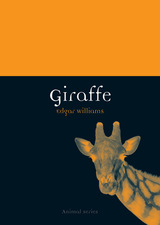
Their extraordinary long necks, distinctive camouflage, graceful movements, and friendly nature have made giraffes one of the most fascinating and beloved animals on the planet. But while giraffes once roamed the Great Plains of Africa in huge herds, their numbers have greatly diminished, and they are now entirely dependent on humanity for their survival. In Giraffe, Edgar Williams explores not only the biology of the tallest animals on earth, but also their impact on human history—including in ancient Egypt, where giraffes were kept as exotic pets; the Middle Ages, when giraffes were considered mythical beasts as improbable and mysterious as the dragon; and the Victorian era, in which giraffe hunting was considered an exhilarating sport.
Giraffe is the first book to provide a comprehensive, twenty-first-century view of the giraffe in art, literature, film, and popular culture, as well as its natural history from prehistory to modern times. With new insights into the giraffe’s genetics and evolution, this book will appeal to those interested in the giraffe’s unique biology and to anyone who admires the majestic giraffe.
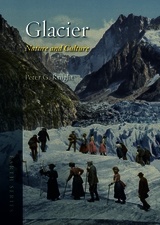
An inspiration to artists and a challenge for engineers, glaciers mean different things to different people. Crossing the boundaries between art, environment, science, nature, and culture, this book considers glaciers from myriad perspectives, revealing their complexity, majesty, and importance—but also their fragility.
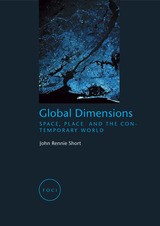
John Rennie Short disagrees with this interpretation, arguing that the world today actually thrives on local differences and that a global polity tends to reinforce – not repress – the power of individual nation-states. He insists that globalization is not so much replacing difference with sameness as providing opportunities for new interactions between spaces and locations, new connections between the global and the local, new social landscapes and more diversity rather than less.
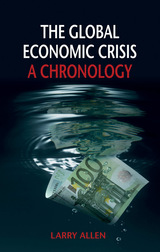
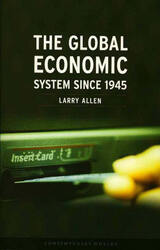
The Global Economic System since 1945 does not shun economic theory, but rather uses it as a tool to reassess recent world economic history. Allen describes how, starting at the end of World War Two, powerful corporations lobbied governments in an effort to reduce the perceived constraints of regulation. In the past twenty-five years these voices have grown increasingly influential, as governments worldwide adopted free-market policies, reduced economic regulation, and promoted the virtues of free-market capitalism.
The Global Economic System since 1945 presents a fresh and wide-ranging synthesis of economic history and theory that will be valuable to both scholars and curious participants in today's global economy.


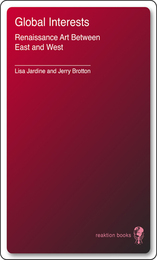
Global Interests offers a timely reconsideration of the development of European imperialism, focusing on the Habsburg Empire of Charles V. Lisa Jardine and Jerry Brotton analyze the impact this history continues to have on contemporary perceptions of European culture and ethnic identity. They also investigate the ways in which European culture came to define itself culturally and aesthetically during the century-long span of 1450 to 1550. Ultimately, their study offers a radical and wide-ranging reassessment of Renaissance art.
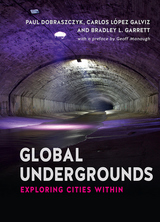
The authors shine their headlamps into an astonishing diversity of manmade underground environments, including subway systems, sewers, communications pipelines, storage facilities, and even shelters. There they find not only an extraordinary range of architectural approaches to underground construction but also a host of different cultural meanings. Underground places can evoke fear or hope; they can serve as sites of memory, places of work, or the hidden headquarters of resistance movements. They are places that can tell a city’s oldest stories or foresee its most distant futures. They are places—ultimately—of both incredible depth and breadth, crucial to all of us topside who work as urban planners, geographers, architects, engineers, or any of us who take subway trains or enjoy fresh water from a faucet. Indeed, as the authors demonstrate, the constant flux within urban undergrounds—the nonstop circulation of people, substances, and energy—serves all city dwellers in myriad ways, not just with the logistics of day-to-day life but as a crucial part of a city’s mythology.
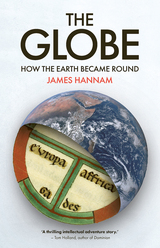
From Babylon to Columbus and beyond, a journey across millennia and—yes—the globe exploring how we came to understand our spherical planet.
The Globe tells the story of humanity’s quest to discover the form of the world: that the Earth is round and not flat. Philosophers in ancient Greece deduced the true shape of the Earth in the fourth century BCE; the Romans passed the knowledge to India, from where it spread to Baghdad and Central Asia. In early medieval Europe, Christians debated the matter, but long before the time of Columbus, the Catholic Church had accepted that Earth is a ball. However, it wasn’t until the seventeenth century that Jesuit missionaries finally convinced the Chinese that their traditional square-earth cosmology was mistaken. An accessible challenge to long-established beliefs about the history of ideas, The Globe shows how the realization that our planet is a sphere deserves to be considered the first great scientific achievement.
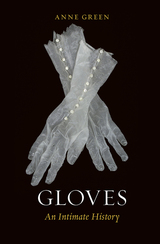
This beautifully illustrated history of gloves draws on examples from across the world to explore their cultural significance. From hand-knitted mittens to exquisitely embroidered confections, and from the three-fingered gloves of medieval shepherds to Bluetooth-enabled examples that function like a mobile phone, gloves’ extraordinary variety is a tribute to human ingenuity. So, too, is the remarkable diversity of their—often contradictory—cultural associations. They have been linked to honor, identity, and status, but also to decadence and deceit. In this book, Anne Green discusses gloves both as material objects with their own fascinating history and as fictional creations in folktales, literature, films, etiquette manuals, paintings, and advertisements. Looking to the runway, Green even explores their recent resurgence as objects of high fashion.
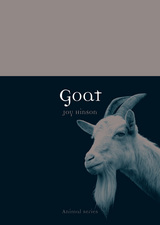
Hinson traces the history of goats from their evolution millions of years ago through their domestication and role in the modern world. She delves into our interaction with endangered wild goat species and the familiar farmyard goat, and she reveals the harm done by humans in indiscriminately importing tamed goats, leading to huge feral populations in Australia and on the Galapagos Islands. Hinson also considers the place of goat products in culinary and medical traditions, from the pouring of goat urine into the ear as a cure for neck pain to the belief that a goat’s bezoar stone can be used as an antidote for poison. From Goat Festivals in the United States to the Christmas Goat in Sweden, Goat takes readers on an exciting ride through this frequently neglected animal’s history, life, and role in today’s world.
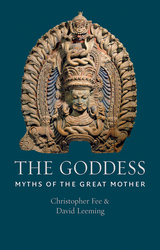
Leeming and Fee use the goddess to gaze into the lives and souls of the people who worshipped her. They chart the development of traditional Western gender roles through an understanding of the transformation of concepts of the Goddess from her earliest roots in India and Iran to her more familiar faces in Ireland and Iceland. They examine the subordination of the goddess to the god as human civilizations became mobile and began to look upon masculine deities for assurances of survival in movement and battle. And they show how, despite this history, the goddess has remained alive in our spiritual imaginations, in figures such as the Christian Virgin Mother and, in contemporary times, the new-age resurrection of figures such as Gaia.
The Goddess explores this central aspect of ancient spiritual thought as a window into human history and the deepest roots of our beliefs.
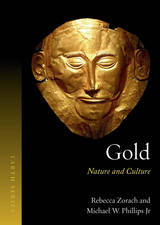
Rebecca Zorach and Michael W. Phillips Jr. cast gold as a substance of paradoxes. Its softness at once makes it useless for most building projects yet highly suited for the exploration of form and the transmission—importantly—of images, such as the faces of rulers on currency. It has been the icon of value—the surest bet in times of uncertain markets—yet also of valuelessness, something King Midas learned the hard way. And, as Zorach and Phillips detail, it has been at the center of many clashes between cultures all throughout history, the unfortunate catalyst of countless blood lusts. Ultimately, they show that the questions posed by our relentless desire for gold are really questions about value itself. Lavishly illustrated, this book offers a shimmering exploration of the mythology, economy, aesthetics, and perils at the center of this simple—yet irresistible—substance.
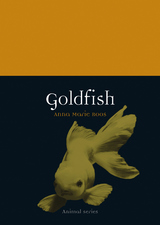
In this illuminating homage to the goldfish, Anna Marie Roos blends art and science to trace the surprising and intriguing history of this much-loved animal, challenging our cultural preconceptions of a creature often thought to be common and disposable.

Brexit shook Britain to its roots and sent shockwaves across the world. But despite the referendum victory, Brexit is peculiarly hollow. It is an idea without political apparatus, without sustaining history, without field-tested ideology. As Sutherland argues: it is without thinkers—like Frankenstein waiting for the lightning bolt. In this irreverent, entertaining, and utterly tongue-in-cheek new guide, Sutherland suggests some stuffing for the ideological vacuity at the heart of the Brexit cause. He looks for meaning in the works of William Shakespeare, Jane Austen, and Thomas Hardy; in modern classics like The Queen and I and London Fields; and in the British national anthem, school songs, and poetry.
Exploring what Britain meant, means, and will mean, Sutherland subtly shows how great literary works have a shaping influence on the world. Witty and insightful, and with a preface by Guardian columnist and critic John Crace, this book belongs on the shelves of anyone seeking to understand the bragging Brexiteers (and the many diehard Remoaners, too).
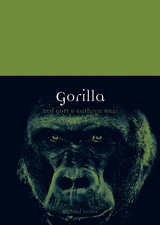
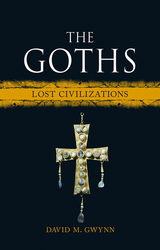
In this engaging history, David M. Gwynn brings together the interwoven stories of the original Goths and the diverse Gothic heritage, a heritage that continues to shape our modern world. From the ancient migrations to contemporary Goth culture, through debates over democratic freedom and European nationalism, and drawing on writers from Shakespeare to Bram Stoker, Gwynn explores the ever-widening gulf between the Goths of history and the popular imagination. Historians, students of architecture and literature, and general readers alike will learn something new about this great lost civilization.
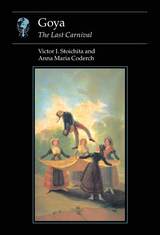
Goya waited until 1799 to publish his celebrated series of drawings, the Caprichos, which offered a personal vision of the "world turned upside down". Victor I. Stoichita and Anna Maria Coderch consider how themes of Revolution and Carnival (both seen as inversions of the established order) were obsessions in Spanish culture in this period, and make provocative connections between the close of the 1700s and the end of the Millennium. Particular emphasis is placed on the artist's links to the underground tradition of the grotesque, the ugly and the violent. Goya's drawings, considered as a personal and secret laboratory, are foregrounded in a study that also reinterprets his paintings and engravings in the cultural context of his time.
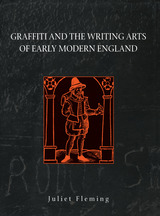
Tattoos and graffiti immediately bring to mind contemporary urban life and its inhabitants. But in fact, both practices date back much further than is generally thought—even by scholars. Drawing on a previously unavailable archive, Juliet Fleming reveals the unknown and disregarded literary arts of sixteenth century England.
In Graffiti and the Writing Arts of Early Modern England, Fleming argues that our modern assumptions of what constitutes written expression have limited our access to and understanding of early modern history and writing. Fleming combines detailed historical scholarship with intellectual daring in a work that describes how writing practices have not been limited to the boundaries of the page; instead they have included body surfaces, ceramics, ceilings, walls, and windows.
Moving beyond what has been preserved in print and manuscript, this book claims the whitewashed wall as the primary textual canvas of the early modern English, explores the tattooing practices of sixteenth-century Europeans, and uncovers the poetics of ceramic cookware. Graffiti and the Writing Arts of Early Modern England will provide a startling new perspective for scholars of early modern literature and cultural history.
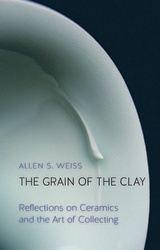
Weiss examines the vast stylistic range of ceramics and investigates both the theoretical and personal reasons for viewing, using, and collecting them. Relating ceramics to other arts and practices—especially those surrounding food—he explores their different uses such as in the celebrated tea ceremony of Japan. Most notably, he considers how works previously viewed as crafts have found their rightful way into museums, as well as how this new-found engagement with finely wrought natural materials may foster an increased ecological sensitivity. The result is a wide-ranging and sensitive look at a crucial part of our material culture.
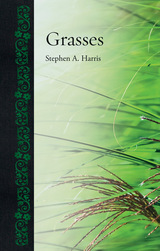
Combining biology, sociology, and cultural history, Grasses explores how these staple crops bear the mark of human influence more visibly than any other plant and how we, in turn, are motivated to protect green space such as public parks. Harris describes this symbiotic connection against the background of climate change, contending that humans must find a way to balance their need for grass as food, as living space, and potentially even as fuel. Providing an impressive exploration of the profound impact these plants have on our survival and our pleasure, this well-illustrated book is a must have for gardeners, foodies, and environmentalists.

Beginning with the early American settlers and the two contrasting visions they set out—one competitive, the other cooperative—Fender traces the development of the latter through a series of dramatic addresses. He examines the inaugural speeches of early presidents such as John Adams and Thomas Jefferson, moving to Abraham Lincoln’s arguments—at once logical and passionate—for maintaining the Union, and then on to the twentieth century’s great orators, such as John F. Kennedy and Martin Luther King Jr. He also looks at the notion of the “great American speech” in popular culture, exploring both the usual places—such as movie courtroom scenes—where it pops up, as well as its unexpected ubiquity in adventure films, thrillers, or any story where equality and justice come under threat.
Through his exploration of great speeches, Fender paints the picture of two simultaneous and free-standing visions of American identity, offering a sophisticated look at American ideological history.
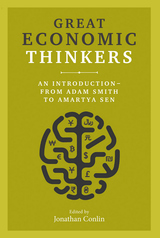
All of the economists featured have had a profound influence on our attitudes towards market intervention and regulation, taxation, trade, and monetary policy. Each of the chapters—all written by an acknowledged expert—combines a biographical outline of a single thinker with critical analysis of their contribution to economic thought. If you’ve ever wanted to find out more about the theorists who gave us the invisible hand, Marxism, Keynesianism, creative destruction, behavioral economics, and many other foundational concepts of economics, this collection of essays is the perfect place to start.
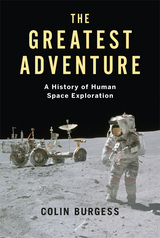
The space race was perhaps the greatest technological contest of the twentieth century. It was a thrilling era of innovation, discovery, and exploration, as astronauts and cosmonauts were launched on space missions of increasing length, complexity, and danger. The Greatest Adventure traces the events of this extraordinary period, describing the initial string of Soviet achievements: the first satellite in orbit; the first animal, man, and woman in space; the first spacewalk; as well as the ultimate US victory in the race to land on the moon. The book then takes the reader on a journey through the following decades of space exploration to the present time, detailing the many successes, tragedies, risks, and rewards of space exploration.
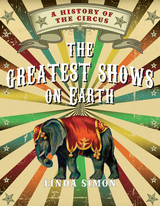
“Step right up!” and buy a ticket to the Greatest Show on Earth—the Big Top, containing death-defying stunts, dancing bears, roaring tigers, and trumpeting elephants. The circus has always been home to the dazzling and the exotic, the improbable and the impossible—a place of myth and romance, of reinvention, rebirth, second acts, and new identities. Asking why we long to soar on flying trapezes, ride bareback on spangled horses, and parade through the streets in costumes of glitter and gold, this captivating book illuminates the history of the circus and the claim it has on the imaginations of artists, writers, and people around the world.
Traveling back to the circus’s early days, Linda Simon takes us to eighteenth-century hippodromes in Great Britain and intimate one-ring circuses in nineteenth-century Paris, where Toulouse-Lautrec and Picasso became enchanted with aerialists and clowns. She introduces us to P. T. Barnum, James Bailey, and the enterprising Ringling Brothers and reveals how they created the golden age of American circuses. Moving forward to the whimsical Circus Oz in Australia and to New York City’s Big Apple Circus and the grand spectacle of Cirque du Soleil, she shows how the circus has transformed in recent years. At the center of the story are the people—trick riders and tightrope walkers, sword swallowers and animal trainers, contortionists and clowns—that created the sensational, raucous, and sometimes titillating world of the circus.

A penetrating and thorough study, Greece offers a compelling account of modern Greek architecture that will be invaluable for all scholars of design and European history.
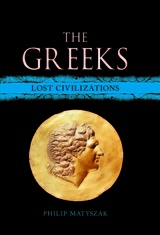
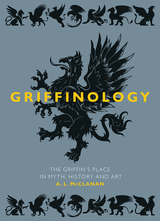
Griffinology is a fascinating exploration of the mythical creature’s many depictions in human culture. Drawing on a wealth of historical and literary sources, this book shows how the griffin has captured the imagination of people for over five thousand years, representing power, transcendence, and even divinity. It explores the history and symbolism of griffins in art, from their appearances in ancient Egyptian magic wands to medieval bestiaries, and from medieval coats of arms to modern corporate logos. The use of the griffin as a symbol of power and protection is surveyed throughout history and into modern times, such as in the Harry Potter series. Beautifully illustrated, this book should appeal to all those interested in monsters, magic, and the mystical, as well as art and history.
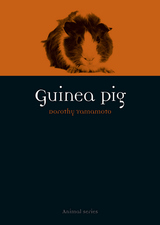
Yamamoto examines the role guinea pigs have today—as pets—but also looks back to less loving times when guinea pigs were put to more direct use. She discusses them as a crucial sacrificial offering to Incan gods, as the entrée in the Cusco Cathedral’s painting of The Last Supper, and as a highly favored experimental subject—for which they have become the quintessential metaphor for anyone in the same unfortunate circumstance. Threading her account with examples from the guinea pig’s many appearances in literature and art, Yamamoto reveals the personality and cultural importance of an animal we have always wanted to keep nearby, providing a fun and unique book for any animal lover.

In this new critical biography, Anne Green draws on Flaubert’s voluminous correspondence and unpublished manuscripts to reveal the extent to which his writing was haunted by traumatic early experiences. She weaves discussion of his work into an intimate account of Flaubert’s life and volatile character, following him from his childhood in Rouen to his student days in Paris, from his extensive travels through North Africa to the imperial court of Napoleon III. Green pays special attention to Flaubert’s close family relationships, love-affairs, and friendships with literary figures, including Turgenev, Sand, Zola, Maupassant, and the Goncourt brothers. This concise and informative biography is a must-read for lovers of literature everywhere.

In this insightful and compelling biography, the only one in English currently available, Christopher Lloyd situates Maupassant’s life and work in the literary and social context of nineteenth-century France. He skillfully introduces the reader to Maupassant’s most famous works, such as Boule de suif, Bel-Ami, and Pierre et Jean, as well as highlights the important stages and achievements of his life and legacy.

Merrifield explores the dynamics of Debord's ideas and works, including the groundbreaking Howls for Sade and his 1967 classic, The Society of the Spectacle. Debord understood life as art, Merrifield argues, and through that lens he chronicles Debord's stint as a revolutionary leader in the 1950s and 1960s, his time in Spain and Italy during the 1970s and the reclusive years leading up to his death in 1994.
Dada and Surrealism's legacy and punk rock's god, Guy Debord spun theories on democracy, people, and political power that still resonate today, making Merrifield's concise yet comprehensive study an invaluable resource on one of the foremost intellectual revolutionaries of the twentieth century.
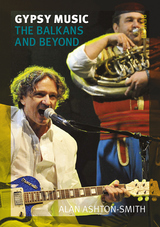
In Gypsy Music, Alan Ashton-Smith explores why this music has such wide appeal, surveying the varied styles that are considered to be gypsy music and asking what links them together. The book begins in the Balkans, home to the world’s largest Romani populations and a major site of gypsy music production. But just as the traditionally nomadic Roma have traveled globally, so has their music. Gypsy music styles have roots and associations outside of the Balkans, including Russian Romani guitar music, flamenco and gypsy jazz, and the more recent forms of gypsy punk and Balkan beats.
Covering the thirteenth century to the present day, and with a geographical scope that ranges from rural Romania to New York by way of Budapest, Moscow, and Andalusia, Gypsy Music reveals the remarkable diversity of this exuberant art form.

Günter Grass is the first biography in English of this Nobel Prize–winning writer. Julian Preece introduces both Grass’s key works and political activities, chronicling his interaction with major figures from literary and public life like holocaust poet Paul Celan, Chancellor Helmut Kohl, and cofounder of the Red Army Faction Ulrike Meinhof. From Grass’s campaigning as a citizen for the anti-Nazi resistor and Social Democrat leader Willy Brandt to his more recent invectives against free-market capitalism, Preece places Grass’s fiction and public work in the context of Cold War European politics and post-unification Germany, painting an indelible portrait of a writer who reinvented the postwar German novel and redefined the role of literary commitment.
READERS
Browse our collection.
PUBLISHERS
See BiblioVault's publisher services.
STUDENT SERVICES
Files for college accessibility offices.
UChicago Accessibility Resources
home | accessibility | search | about | contact us
BiblioVault ® 2001 - 2024
The University of Chicago Press









